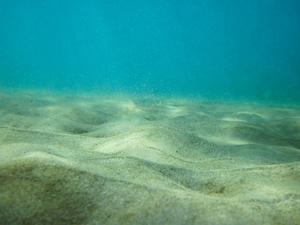Difference between revisions of "Insoluble"
| Line 10: | Line 10: | ||
===Examples=== | ===Examples=== | ||
{| | {| | ||
| − | |[[File:SandWaterMixture.png|center| | + | |[[File:SandWaterMixture.png|center|300px]] |
| − | | style="height:20px; width: | + | | style="height:20px; width:300px; text-align:center;" |Sand is [[insoluble]] because it does not [[dissolve]] in [[water]]. |
|} | |} | ||
| − | |||
==Key Stage 3== | ==Key Stage 3== | ||
| Line 19: | Line 18: | ||
An [[insoluble]] [[material]] is one that cannot be easily [[dissolve]]d in [[water]]. | An [[insoluble]] [[material]] is one that cannot be easily [[dissolve]]d in [[water]]. | ||
| + | ===About Insoluble Materials=== | ||
| + | : [[Insoluble]] is the opposite of [[soluble]]. | ||
| + | : When an [[insoluble]] [[material]] is put in a [[solvent]] (usually [[water]]) it can still be seen, no matter how much you stir the [[solvent]]. | ||
| + | : An [[insoluble]] [[material]] will make the [[solvent]] appear cloudy. | ||
| + | : Many [[material]]s are [[soluble]] in some [[solvent]]s and [[insoluble]] in other [[solvent]]s. | ||
| + | : Many [[material]]s we call [[insoluble]] can [[dissolve]] in a [[solvent]] a small amount but so little that the rest sinks to the bottom of the [[solvent]] to form a [[sediment]]. | ||
| + | |||
| + | ===Examples=== | ||
| + | {| | ||
| + | |[[File:SandWaterMixture.png|center|300px]] | ||
| + | | style="height:20px; width:300px; text-align:center;" |Sand is [[insoluble]] because it does not [[dissolve]] in [[water]]. | ||
| + | |} | ||
===References=== | ===References=== | ||
====OCR==== | ====OCR==== | ||
:[https://www.amazon.co.uk/gp/product/0198359829/ref=as_li_tl?ie=UTF8&camp=1634&creative=6738&creativeASIN=0198359829&linkCode=as2&tag=nrjc-21&linkId=90e8d7b4f039d53035238fa0320fe00b ''Insoluble, page 42, Gateway GCSE Chemistry, Oxford, OCR ''] | :[https://www.amazon.co.uk/gp/product/0198359829/ref=as_li_tl?ie=UTF8&camp=1634&creative=6738&creativeASIN=0198359829&linkCode=as2&tag=nrjc-21&linkId=90e8d7b4f039d53035238fa0320fe00b ''Insoluble, page 42, Gateway GCSE Chemistry, Oxford, OCR ''] | ||
Revision as of 15:35, 13 December 2019
Contents
Key Stage 2
Meaning
An insoluble material is one that cannot be easily dissolved in water.
About Insoluble Materials
- Insoluble is the opposite of soluble.
- When an insoluble material is put in water it can still be seen, no matter how much you stir the water.
- An insoluble material will make water appear cloudy.
Examples
| Sand is insoluble because it does not dissolve in water. |
Key Stage 3
Meaning
An insoluble material is one that cannot be easily dissolved in water.
About Insoluble Materials
- Insoluble is the opposite of soluble.
- When an insoluble material is put in a solvent (usually water) it can still be seen, no matter how much you stir the solvent.
- An insoluble material will make the solvent appear cloudy.
- Many materials are soluble in some solvents and insoluble in other solvents.
- Many materials we call insoluble can dissolve in a solvent a small amount but so little that the rest sinks to the bottom of the solvent to form a sediment.
Examples
| Sand is insoluble because it does not dissolve in water. |
